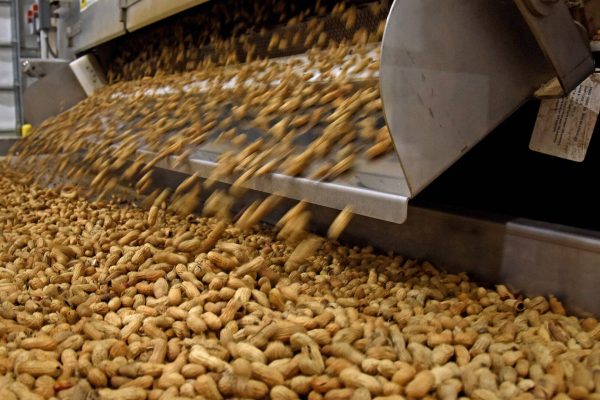Project Report For Peanut Processing Plant
Introduction
Project Report For Peanut Processing Plant Is As Follows.
A facility devoted to the cultivation and processing of peanuts, one of the world’s most popular and significant commercial crops, is known as a peanut processing factory. Raw peanuts are processed at peanut processing factories to provide a variety of edible items, such as peanut butter, roasted peanuts, peanut oil, and peanut flour. The initial steps in the processing of peanuts are the washing and grading of raw peanuts. This entails cleaning out any foreign objects like stones, dirt, or trash and sorting the peanuts according to size and quality. Only peanuts of the highest calibre get on to the following processing steps thanks to this phase.
In addition to the desired end products, the peanuts may go through a number of various procedures after being cleaned and graded. One typical method is roasting, which involves heating the peanuts to improve their flavour and fragrance. Depending on the desired result, roasting can be done either dry or with oil. In addition to being used as a popular snack, roasted peanuts can also be made into peanut butter or confections.
Which entails separating the peanut kernel from its outer shell or pod. Shelling can be carried out manually or with the use of automated machinery. Depending on their intended application, the shelled peanuts are subsequently processed further. To make peanut butter, for instance, certain nuts may be crushed or ground into a paste, while others may be subjected to oil extraction to create peanut oil.

Process Of Peanut Processing Plant
Cleaning and Grading: Raw peanuts are first cleaned to eliminate contaminants such as stones, dirt, and debris. They are then sorted and graded based on size and quality to guarantee that only high-quality peanuts advance to the following phase.
Roasting: This procedure improves the flavour and fragrance of the peanuts. Depending on the desired effect, the peanuts are cooked either dry or with oil. Roasting can be done in batch or continuous roasters.
Shelling: Shelling is the process of removing the outer shell or pod from a peanut kernel. This can be done manually or with the use of mechanised equipment. The shelled peanuts are then further processed based on their intended purpose.
Grinding and Milling: Depending on the desired texture, the peanuts can be processed into a smooth or chunky paste. This method is extensively employed in the manufacturing of peanut butter. Peanuts can also be ground into a fine powder to make peanut flour.
Oil Extraction: Peanuts are oil extracted in this technique to make peanut oil. It is possible to do so using techniques such as cold pressing or solvent extraction. To increase stability and shelf life, the extracted oil is refined, filtered, and occasionally hydrogenated.
Packaging: For distribution, processed peanuts or peanut-based goods are packed. This comprises pouring the necessary product into jars, cans, or pouches and ensuring correct sealing and labelling.
Market Potential Of Peanut Processing Plant
In 2022, the worldwide peanut market will be worth US$4.1 billion. The market is expected to reach US$ 5.4 billion by 2028, with a 4.8% CAGR from 2023 to 2028.
Customers’ increasing desire for ready-to-eat snacks has boosted the market for peanut components. To capture consumers’ interest and boost their market presence, prominent manufacturers are also focusing on creating cutting-edge products. As a result, this has led to the rise of the market for peanut components.
Over the forecast period, high increase in peanuts is expected to drive global protein-rich food consumption and enhance exports. Growing demand for peanut oil has also boosted market growth in the pharmaceutical and personal care industries. The surge in consumer demand for plant-based ingredients is the primary driver of the peanut ingredient industry. Peanuts and peanut butter account for the vast bulk of nuts consumed in Europe.
As a result of these factors, the peanut market is experiencing an increase in clients, leading in significant revenue creation in Asia-Pacific regions over the forecast period. The European peanut business is predicted to develop as consumer preferences shift away from meat-based protein and towards plant-based protein. As interest in healthy eating develops, peanuts are projected to provide unsaturated fats.
Project Report Sample On Peanut Processing Plant
Need Help?
Create 100% Bankable Project Report

